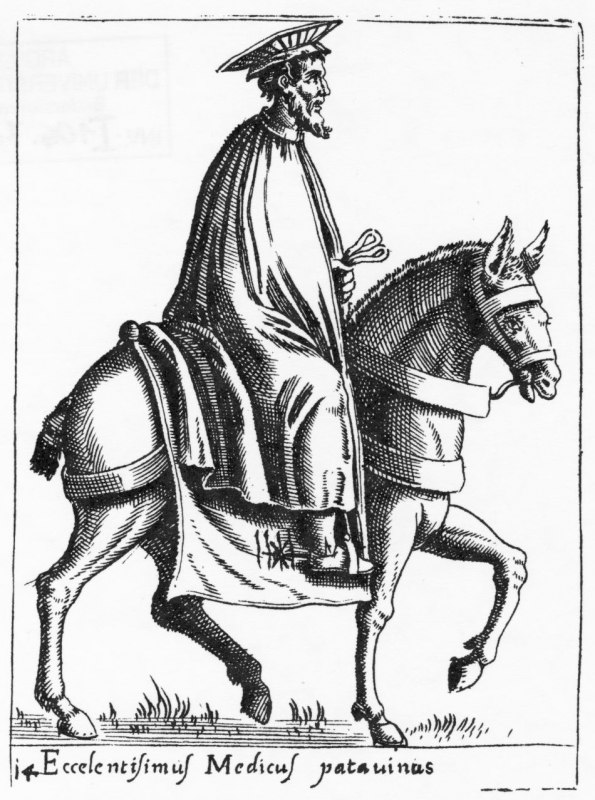Peregrinatio academica
Today, student exchange in the European university network is encouraged through large mobility programs such as Erasmus+. Universities like to emphasize their members’ internationality and measure their activities by the categories of “incoming” and “outgoing”. One of the main requirements for university members is their willingness to be mobile. The peregrinatio academica is an integrative part of university life and has a long tradition that can be traced back as far as Frederick Barbarossa’s so-called scholars’ privilege of 1155, which offered the emperor’s protection and separate legal status to the wandering students.
Peregrinatio academica means the education-related mobility of university students in particular, but also scholarly migration in a more general sense. The early long-range migrations to the few European universities in Bologna, Paris, Oxford, and Cambridge became shorter in the 14th century, when the first universities were founded in Central Europe (Prague, Vienna, and Cracow) and the university system was established in the German-speaking world. The trans-regional appeal of the old university strongholds persisted until the Early Modern Period, however.
The beginnings – studying abroad
If one came from the area of Austria before the middle of the 14th century and one wanted to study, one had to endure a long trip. This trip led to different cities, depending on one’s preferred discipline, because not all subjects of the four faculties existing in the Middle Ages (Philosophy, Medicine, Law, Theology) was taught at every university location. While prospective theologians went to Paris, physicians had to go to Salerno or Montpellier, and jurists mainly studied in Bologna. In the latter city the most famous legal scholars of the old empire were employed. Primarily the reception of Roman law is associated with Bologna; this was transferred by the many graduates to the northern Alpine area beginning in the 13th century. Bologna furthermore also was a model for a type of university with strong student autonomy and thus was very attractive for students with a high social status and class consciousness. This social exclusivity was less due to actual social exclusion in the matriculation process, and more due to high costs of studying and living abroad for many years. Thanks to relatively well-preserved sources and collective biographical works based on them, a lot is known about the students. In the 13th century, a large influx of students from the German-speaking area began and remained constant with some fluctuations; between 1265 and 1425, according to Schmutz, 3,600 people from the German-speaking world enrolled in Bologna alone. Combined with institution-historical analyses, the peregrinatio academica can be explained as a complex interplay of individual interests, organizational conditions at the study location, and not least political factors.
Where one studied was influenced by familial relationships as well as the reputation of various universities. Studying abroad was fraught with uncertainties. Wars, conflicts between the city rulers and the students, as well as illnesses such as the plague epidemic were ubiquitous. To support each other, university attendees formed so-called academic nations within the student body – corporations in the university, whose membership was governed by geographical origin and common language. Often, small traveling groups were also formed by relatives or people from the same region.
A university nearby
Through the university foundations in the 15th century (in the southern German area Freiburg 1457, Ingolstadt 1459, Tübingen 1476) the traveling distances shortened considerably and they offered new possibilities to change the study location during one’s studies or to for example move to another university to study medicine, law, or theology, after completing the basic studies at a nearby philosophical faculty. Graduating at one of the most renowned universities in France or Italy was still coveted, but remained difficult for all but the most wealthy students or richly endowed prebends. Undoubtedly, humanism and renaissance also advanced the trans-regional exchange among scholars.
The bulk of the university attendees, however – according to Schwinges’ numbers these were more than 200,000 people until 1500 in the German-speaking world alone – only enrolled at one university and left it again after one or two years without an academic title. Over the course of the 15th century, only about a third of the students achieved the title of Bachelor at the University of Vienna, and not even ten percent continued their studies and reached the title of Master – with a declining tendency. Inter-university exchange was limited in the rather poor Viennese artist sphere.
From the peregrinatio academica to the Kavalierstour
In the course of the history of universities, the reformation marked a break, and significant changes in the migration patterns in the area of Austria came with it. While immigration to Vienna was decreasing, the direction of migration moved to the Protestant education centers in Wittenberg and Tübingen. The peregrinatio academica experienced a transformation and expansion beginning in the second half of the 16th century, when the rural nobility discovered the universities as places of education for their sons, and integrated university attendance into an expansive travel and education program. In the framework of these “Kavalierstouren” (“grand tours”) by the aristocracy, the “old universities” in Italy and France were again strongly frequented.

